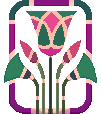
Tuesday, January 6, 2015
"Mysterious Scene with Hathor"
5:45am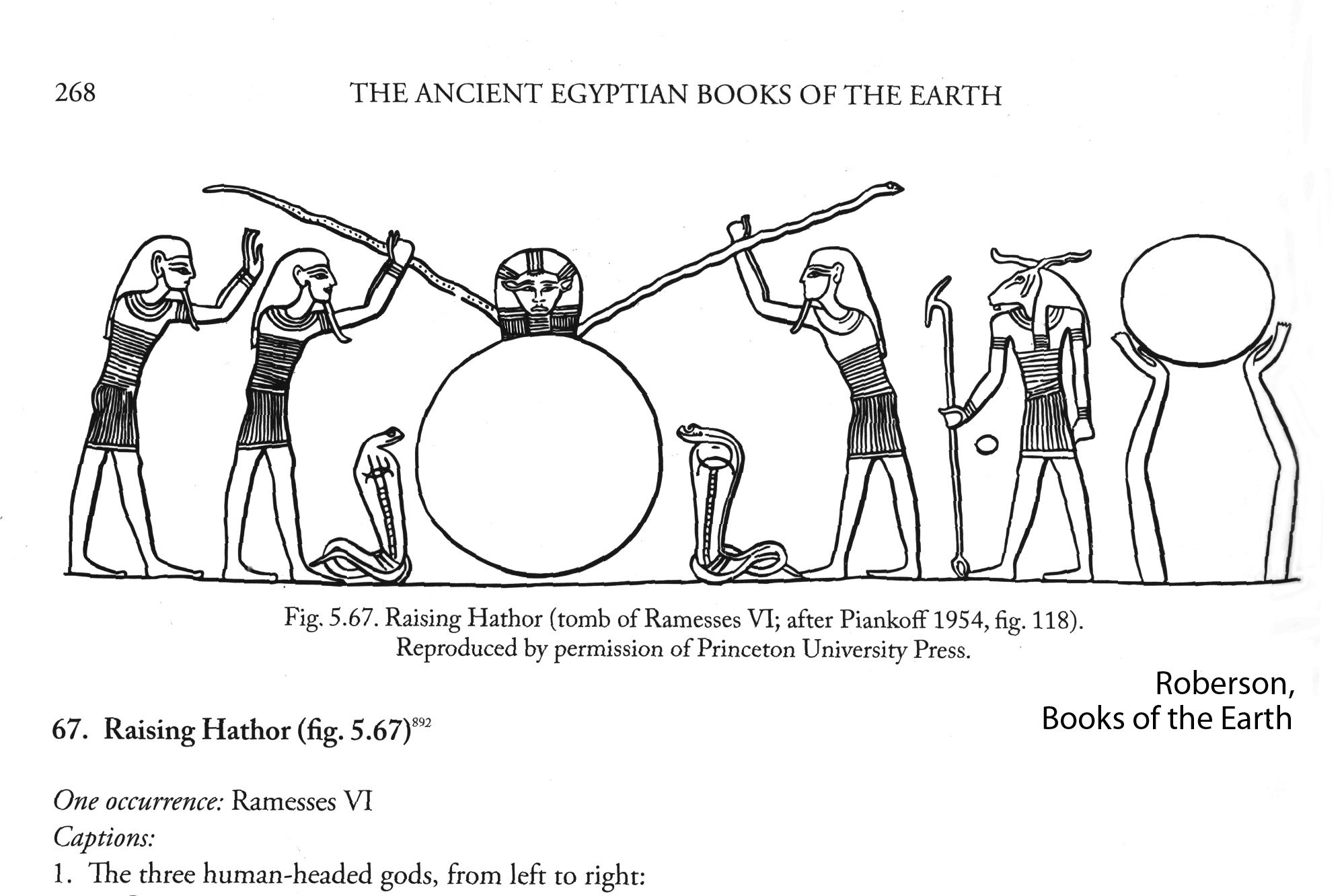
Raising Hathor (tomb of Ramesses VI; after Piankoff,
in Ancient Egyptian Books of the Earth, by Joshua Roberson, page 268
Again, in the big, heavy book! Roberson describes the image above:
"On the right, the two 'arms of Nun' emerge from the ground, bearing a disc. To the left of the arms stands the ram-headed sun god, holding a was-scepter, with a small disc in front of his lower torso, identifying him as Re." (page 269)
(Why is it floating there, about the level of the "root chakra"? Hmmmm-m-m-m)
"At the center of the tableau, the frontal face of Hathor, probably representing the eye of Re, emerges from a large solar disc. Two bearded, male figures stand to either side of the disc and grasp a serpent, whose rigid, v-shaped body appears to pass through the lower portion of the Hathor head. The figure on the right is identified as Atum, while his counterpart on the left bears the epithet 'He Who Seizes'. Two coiled, rearing uraei flank the base of the disc, which they face. Their names, 'Flame' and 'Devourer,' link them with the fiery emanations of the solar eye (=Hathor). On the left, a third bearded male, the 'Chief,' stands with his arms raised in adoration." (page 269)
Again, thanks to William Petty, we have a photo of most of this scene:
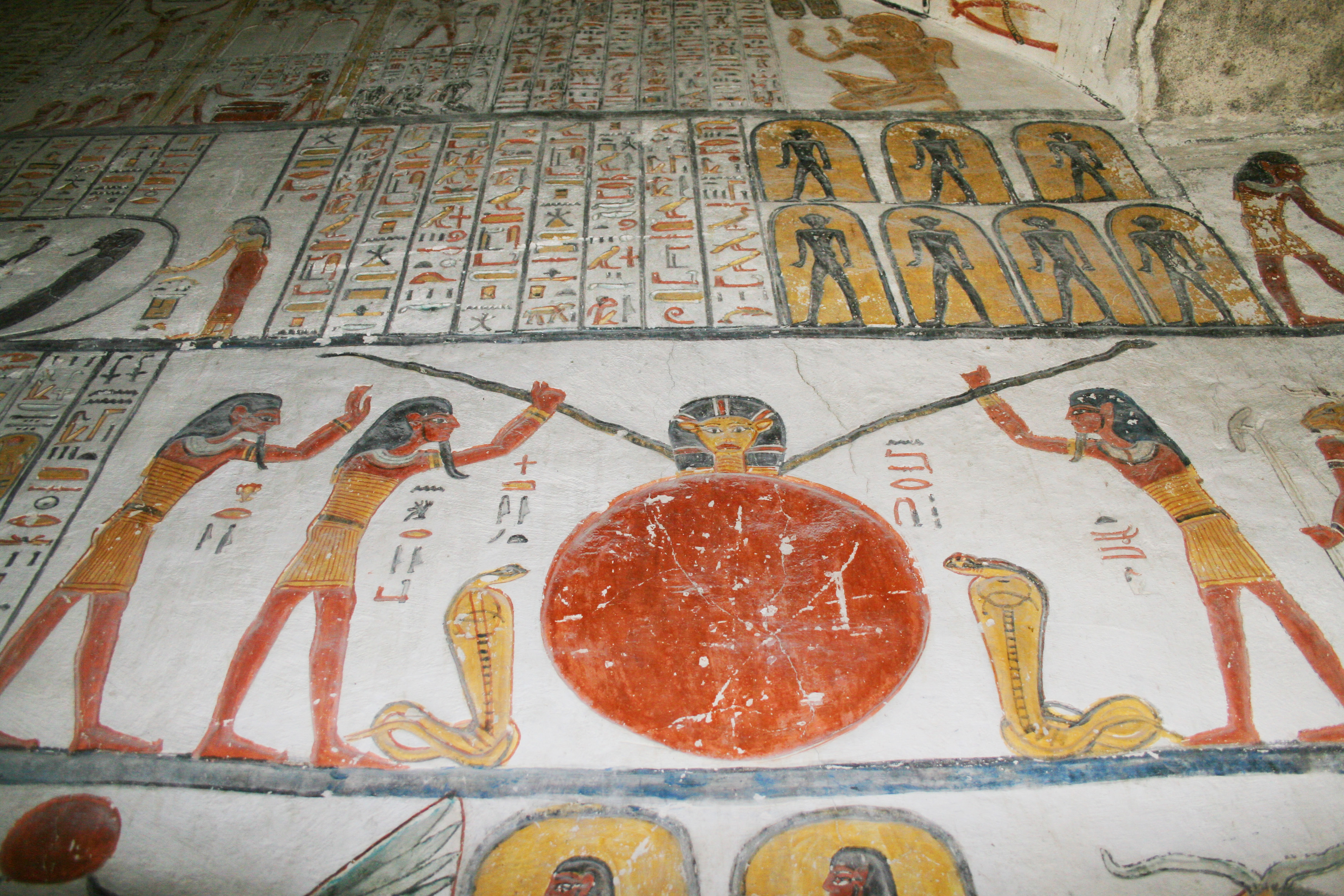
Photo courtesy William Petty
The far right arms are not in the photo, and only a bit of the was-scepter of the ram-headed god is seen, but otherwise, the gang's all there.
Roberson gives detailed explanation of the hieroglyphs:
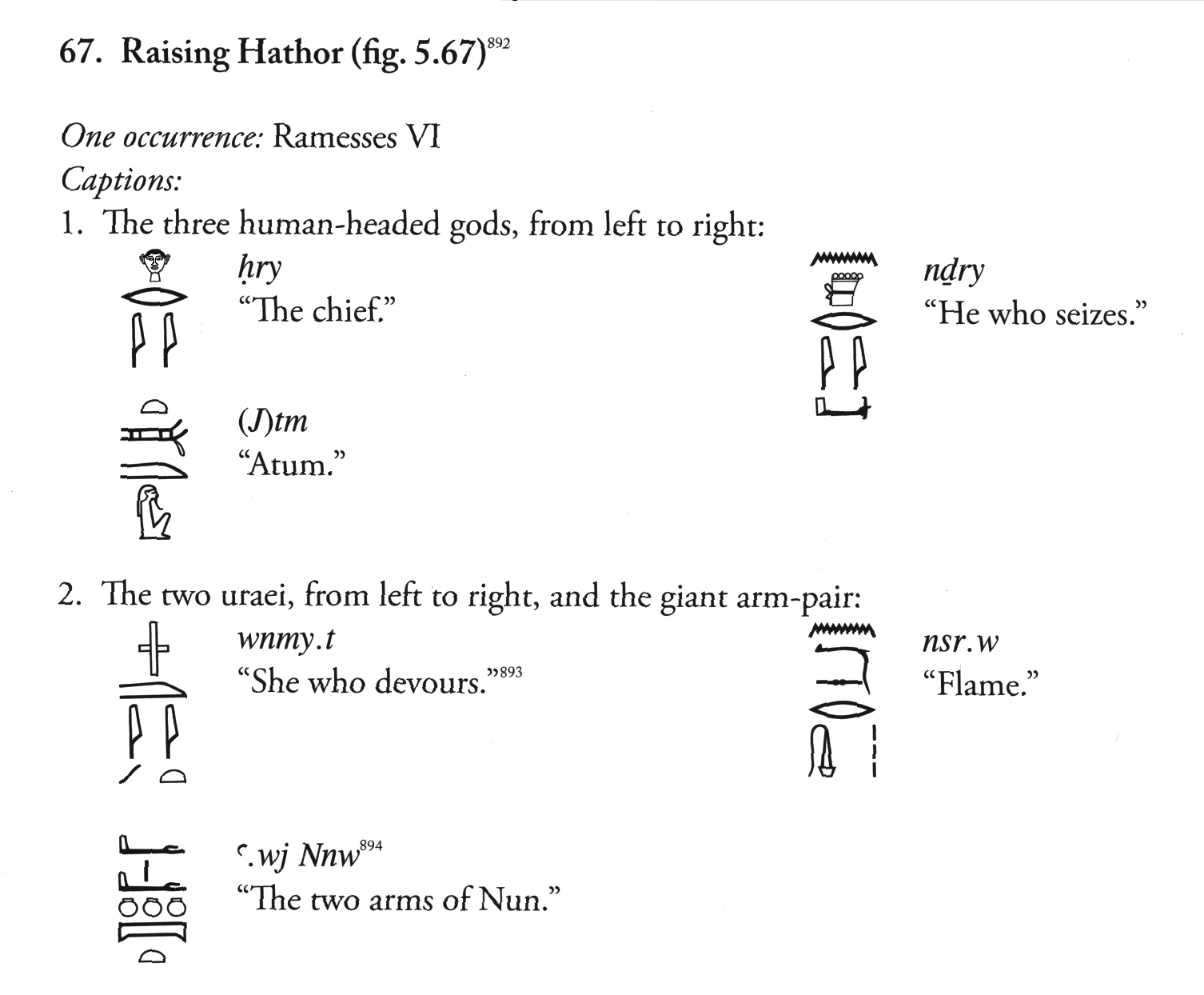
Why does he figure the two arms as "arms of Nun" and not "arms of Nut"?
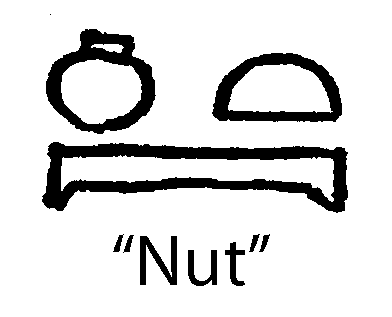
He explains in footnote 894:
"Taking the final t ["breadloaf" glyph] as superfluous (cf. the 'arms of Nun' from scene 5). The chthonic nature of the scene, in which the arms literally rise up from the ground, supports the reading offered here; thus also Hornung 1972, 470 and Piankoff 1954, 266 (contra an earlier interpretation as 'Nut' in Piankoff 1953, 50, n5)." (Page 268)
So basically, he's saying the arms are coming from the earth, while Nut is a sky goddess, so it couldn't be Nut, because Nut's embrace would be coming from above.
As time is short this morning, I share an image of the footnotes Roberson has gathered about the scene. He suggests Bleeker's book to learn more about Hathor's role as the "fiery eye of Ra".
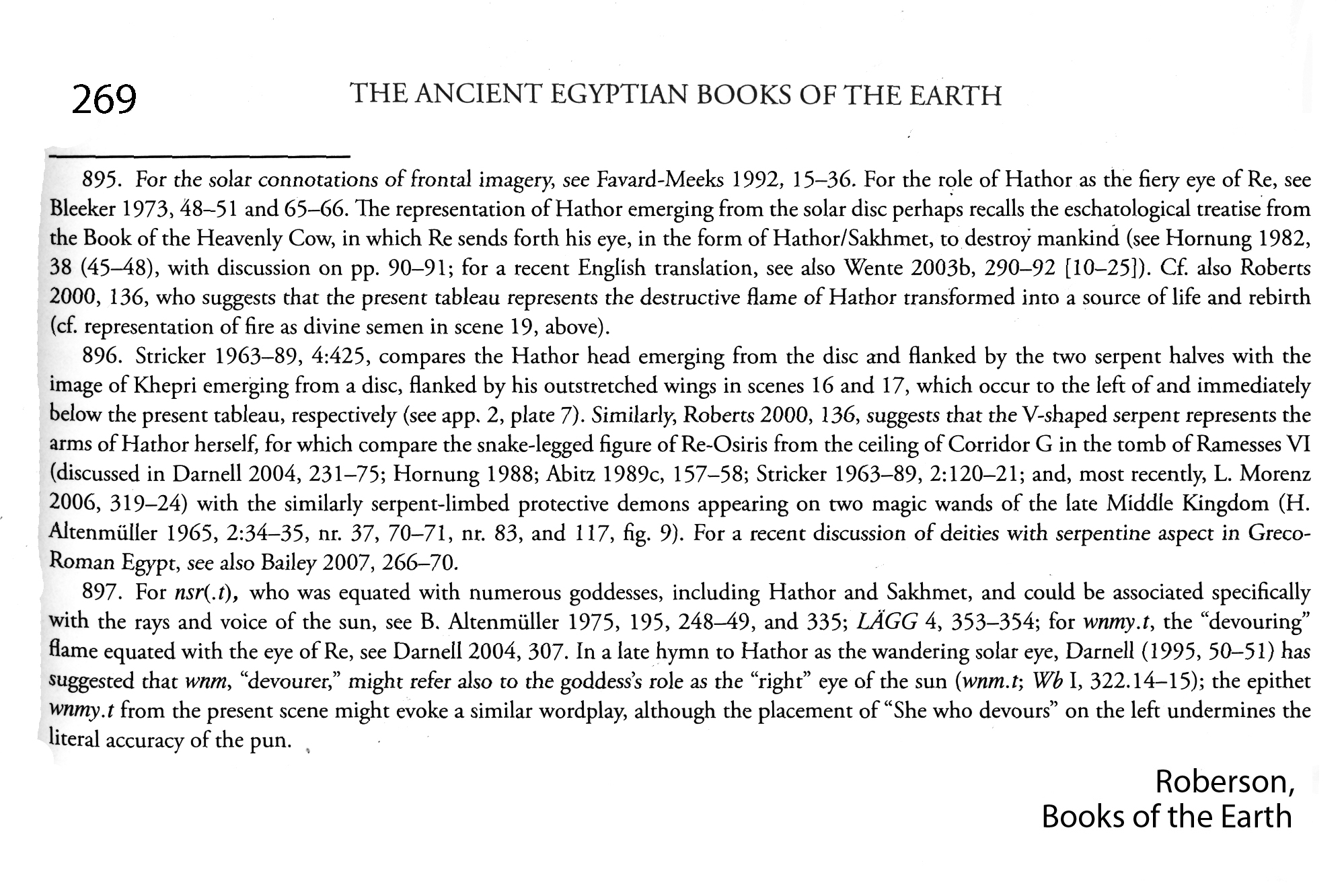
So I'll be studying this mysterious scene some more...
Meanwhile, briefly, the most cogent and concise excerpt from Bleeker's Hathor and Thoth: Two Key Figures of the Ancient Egyptian Religion can be summed up in one sentence. No doubt at least part of what's going on in the scene above is underpinned by "the idea that Hathor represents a divine potency that is fundamental in the life of the sun-god, since on the one hand she continually renews him and, on the other, springs from him." (Pages 65-66)
(Note of February 21, 2015)
Alison Roberts describes Hathor in this scene as "fiery womb goddess" and describes the scene:
"Hathor as the fiery generatrix in the cycle of death and rebirth. On the far right the arms of Naunet (Nun's female counterpart) hold a sun-disk. Next comes a ram-headed elder, watching as Atum and the 'Seizer' hold fast Hathor's serpent-like arms, binding her volatile power. The goddess appears above a womb-like disk flanked by two uraeus-serpents called the 'Devouring One' and the 'Flaming One'. Further to the left in the same register (not shown here) a winged black scarab beetle emerges from a disk." - My Heart My Mother, Northgate Publishers 2000, (Page 253, 136)